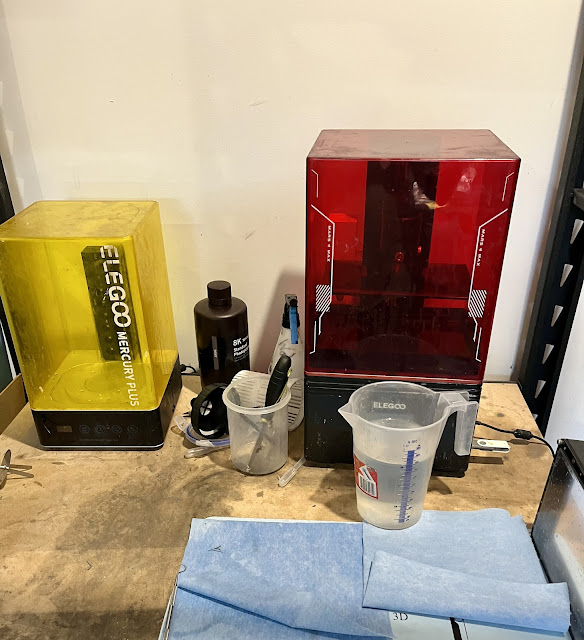Hobby 3D resin printing is the culmination of years of dreaming for me. I can purchase, download, modify and create files that can be printed out.
Years of waiting for stock or finding a hobby shop or being limited by the big designers who have stock in Australia, have been ended, and now I can search for and buy whatever I need.
I was in Brisbane last week, and ventured over to Gap Gaming, Mrs Don’t Touch My Stuff had just been to Myer and I was owed some “Quid pro quo.”
I poked around found a Napoleonic Plastics Stockist and headed over. Trouble is they stock stuff but off site and you need to order it for pick up. I was in the mood to browse and buy, not web search, click, and wait 3 hours. Is there anything they can do to assist, as I’ve only got the afternoon available. “No sorry, happy to go to the warehouse after lunch and get an order but can’t help otherwise, that is the store process.”
I had been eyeing off a British Rifles box, some Hussars, Light Dragoons and Artillery. I figured I wouldn’t need multiple print runs so the price for STLs versus Boxes of plastics might stack up. I had worked out about $200 worth of kit.
Instead I got home, bought the STLs from Napoleonic STL Files, downloaded them and printed them out and they now wait for painting.
The process I follow is also something I thought I’d outline since I started out with about a 50% success rate for a plate of prints, but now haven’t had a failure in months. So what I’m doing is working for me at least.
I have an Elegoo Mars4 and I use the Elegoo 8k resin, I bought a dozen bottles on special. The resin produces fine details, is relatively sturdy and takes primer well.
For each model I am going to print I open it in 3D Builder (available from MS App Store), this imports the STL and if it doesn’t give an error, I close it, and if it does have an error the 3D Builder app runs a fix, which can sometimes take hours, and after that I save the STL again.
Before I was doing this step some models would print weird extra parts or merge into other things. Since ‘repairing’ each model before printing I have had much more success. And any errors have not been from the repaired file.
After checking and repairing files I bring a plates worth into Mango3D Slicer. Most models come with supports, and these often use less resin, but it isn’t a massive amount so if the supports aren’t included Mango creates the supports and these work fine.
While I have heard tell of some printers needing to have sparsely populated plates, due to suction or stiction issues], I usually run a fairly crowded plate. The last print run was 32 French Line Fusiliers and 8 French Line Grenadiers. The models were separated by 15mm centre to centre and rolled out of the printer after 6 and a quarter hours. I set it off at 2130 and it was done by 0700 the next day when I checked. Of those I had four bayonets the came off in the wash.
Speaking of washes, after printing I take the plate out, and hold it over a white 11L Pail from Bunnings. These come with a lid so the Isopropyl Alcohol doesn’t evaporate or stink up the room. This is the ‘dirty’ wash. The IPA has come from old washes and a few months of printing.
When it gets too dirty, I pour it into a barrel and let it sit for a day or two, then tap it and take off several litres which is clear.
The printer came with a was station which holds about 2L of IPA and for this I use clean IPA and when it gets dirty it goes into the barrel.
After the wash which is of the models and supports, I dunk the model in a boiling water bath to soften the connections. The models usually free up easily at this point but care should be taken to reduce the small parts from breaking off.
Clean, support free models then dry and go into the UV station for 30 - 60 seconds of curing.
At that point the model is ready for priming and moving from one list to another.










